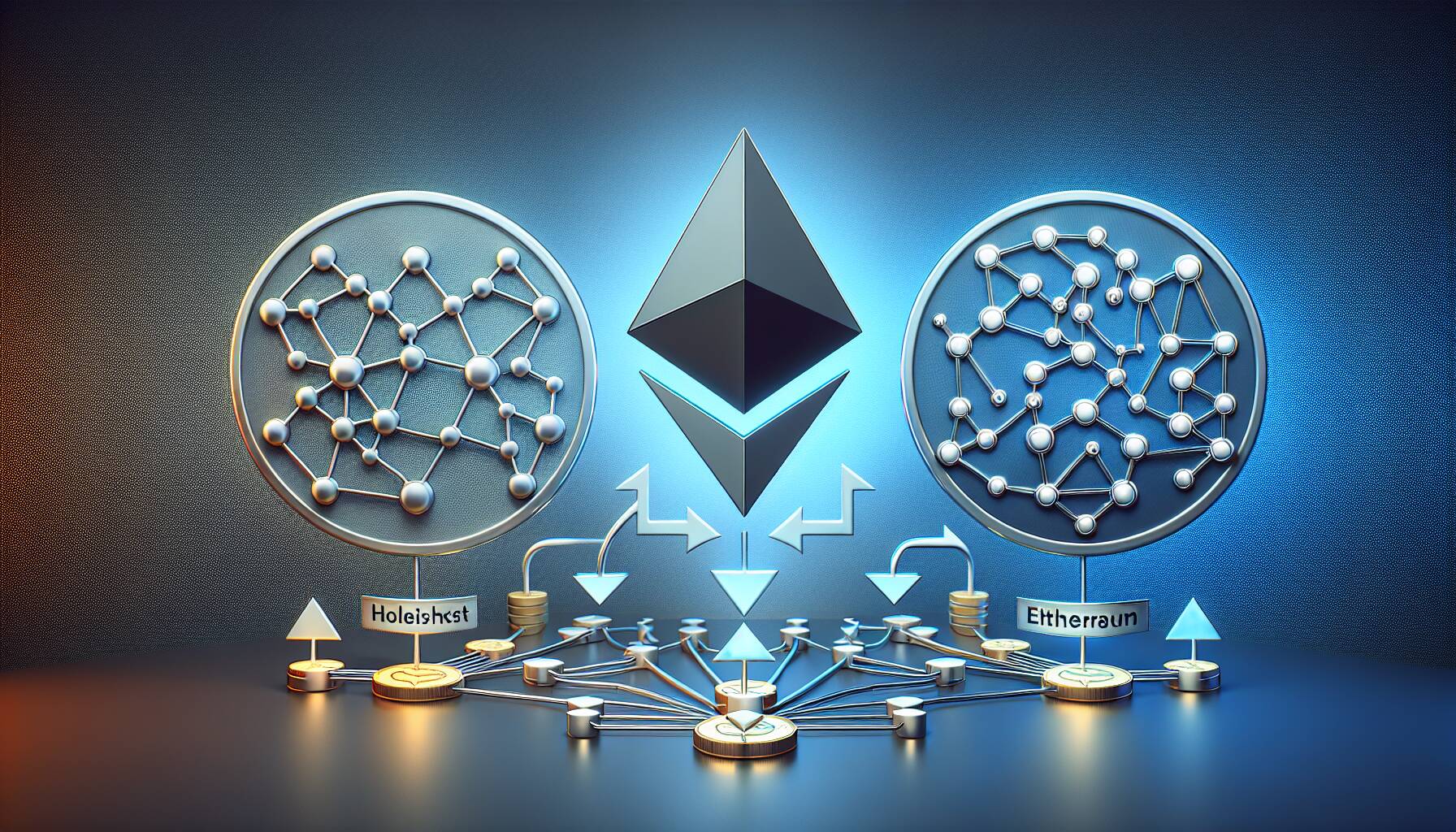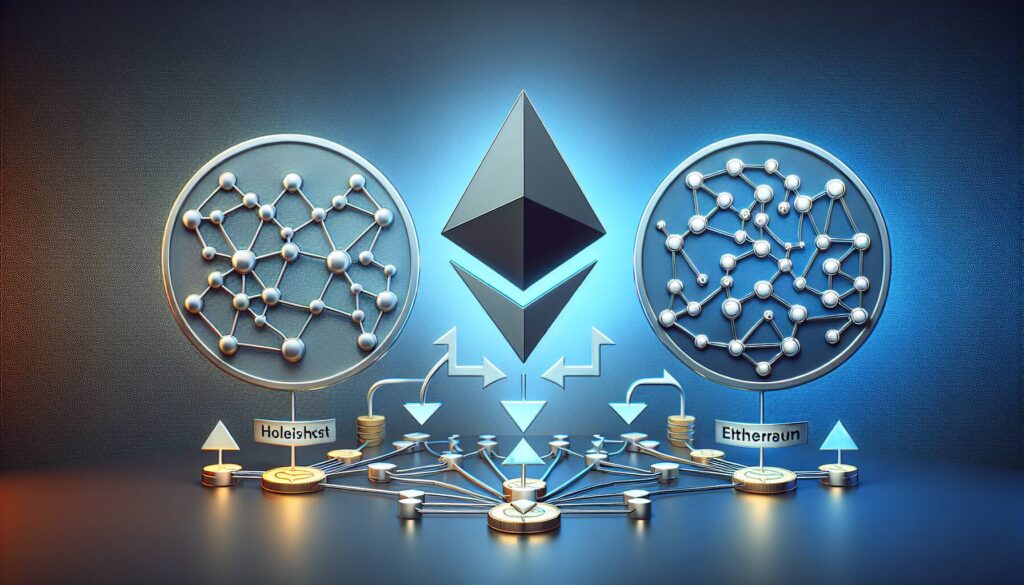Ethereum is making waves in the cryptocurrency world with the announcement that it will be discontinuing its largest test network, Holesky, due to a series of challenges encountered while testing the anticipated Pectra upgrade. The Ethereum Foundation (EF) revealed in a recent blog post that the phased winding down of the Holesky network is set to culminate in a full shutdown by September 30. This decision comes after Holesky faced significant downtime following a faulty test earlier in the year, which raised questions about its reliability and necessitated a switch to a new test network, Hoodi.
The Hoodi network, which made its debut earlier this week, is designed to replace Holesky and will take on the crucial role of testing Ethereum’s upcoming upgrades. Built to closely mimic Ethereum’s mainnet, Hoodi will allow developers to experiment with new software in a controlled environment. It comes in the wake of challenges that left Holesky struggling under the weight of “inactivity leaks,” which affected its ability to function effectively as a validator-testing ground.
“Stakers, this is your new testing ground,” said Tim Beiko, the protocol support lead at the EF, emphasizing the importance of Hoodi for Ethereum developers.
Holesky was originally designed to support a vast validator ecosystem, boasting a staggering capacity of 1.4 million validators—significantly more than any preceding test network, including its predecessor Goerli. This capacity made Holesky a critical asset for testing Ethereum’s validator infrastructure. However, with the issues faced and the subsequent recovery period, it became clear that a fresh start with Hoodi was necessary. Hoodi will begin its testing journey with the Pectra upgrade scheduled for March 26, and should all go well, Ethereum’s mainnet could see the upgrade implemented about a month later.
This strategic shift highlights Ethereum’s ongoing commitment to maintaining a robust and efficient blockchain ecosystem, one that continuously evolves in response to the challenges faced during development and testing. As the transition unfolds, the Ethereum community and developers alike are reminded of the critical function test networks serve in safeguarding the future of the Ethereum mainnet.

Ethereum Discontinues Test Network Holesky
The Ethereum network is undergoing significant changes with the discontinuation of its largest test network, Holesky. Below are the key points related to this development:
- Discontinuation of Holesky: The Ethereum Foundation has announced the winding down of Holesky, expected to be fully shut down by September 30.
- Challenges with Pectra Upgrade: Holesky encountered issues during testing of the upcoming Pectra upgrade, leading to its decline.
- Launch of Hoodi Test Network: The newly launched Hoodi test network will replace Holesky and will begin testing the Pectra upgrade.
- Impact of Inactivity Leaks: Holesky suffered from “inactivity leaks” after falling offline, which affected its validator operations and testing capabilities.
- Importance of Testnets: Test networks like Holesky and Hoodi allow developers to test software changes, ensuring better implementation on the Ethereum mainnet.
- Hoodie’s Infrastructure: Hoodi is designed similarly to Holesky to facilitate testing for Ethereum’s validator ecosystem, supporting a large number of validators.
- Pectra Upgrade Timeline: If the Hoodi testing goes well, Pectra is expected to launch on Ethereum’s mainnet approximately 30 days after initial tests.
“Stakers, this is your new testing ground,” – Tim Beiko, EF Protocol Support Lead
These developments in Ethereum’s test networks are essential for developers and users, as they enhance the reliability and performance of the Ethereum ecosystem. Understanding how these changes affect the testing phases can help readers appreciate the efforts behind maintaining and upgrading blockchain technologies.
Ethereum’s Test Network Transition: A Step Forward or Backward?
The recent announcement from the Ethereum Foundation (EF) about the discontinuation of the Holesky test network paints a picture of both progress and challenges within the Ethereum ecosystem. While the transition to the newly launched Hoodi test network presents promising opportunities for development and innovation, it also raises questions about reliability and operational continuity in Ethereum’s validator landscape.
Competitive Advantages of Hoodi Over Holesky
Hoodi is introduced at a critical time, promising a more stable environment for testing the forthcoming Pectra upgrade. Unlike Holesky, which struggled with inactive validators and lengthy recovery times, Hoodi is designed to offer a more robust and efficient platform for developers. The success of the Hoodi network could streamline the development process, as it aims to address the major pitfalls faced by its predecessor. With plans for realignment with Ethereum’s mainnet rollout, Hoodi could foster quicker feedback loops for Ethereum developers, enhancing their ability to adapt and refine changes in real-time.
Potential Drawbacks and Stakeholder Impact
However, the transition does not come without its drawbacks. The winding down of Holesky raises concerns about the immediate impact on validators who have relied on its infrastructure for testing. There’s the fear that those stakers and node operators may struggle to adapt to new protocols and features in Hoodi, leading to potential delays in the broader implementation of the Pectra upgrade. Inactivity leaks that previously hampered Holesky’s efficiency have left lingering trust issues within the community. If Hoodi encounters similar growing pains, it could stymie the momentum towards Ethereum’s overall scalability and performance goals.
This transition primarily impacts developers, stakers, and validators of the Ethereum ecosystem. While they may benefit from a more stable testing environment, they also risk facing hurdles in adjusting to a new network that needs to prove its reliability quickly. Ethereum enthusiasts and the global developer ecosystem will be watching closely to see whether Hoodi can indeed offer the required stability and functionality that Holesky could not during its later stages.

















